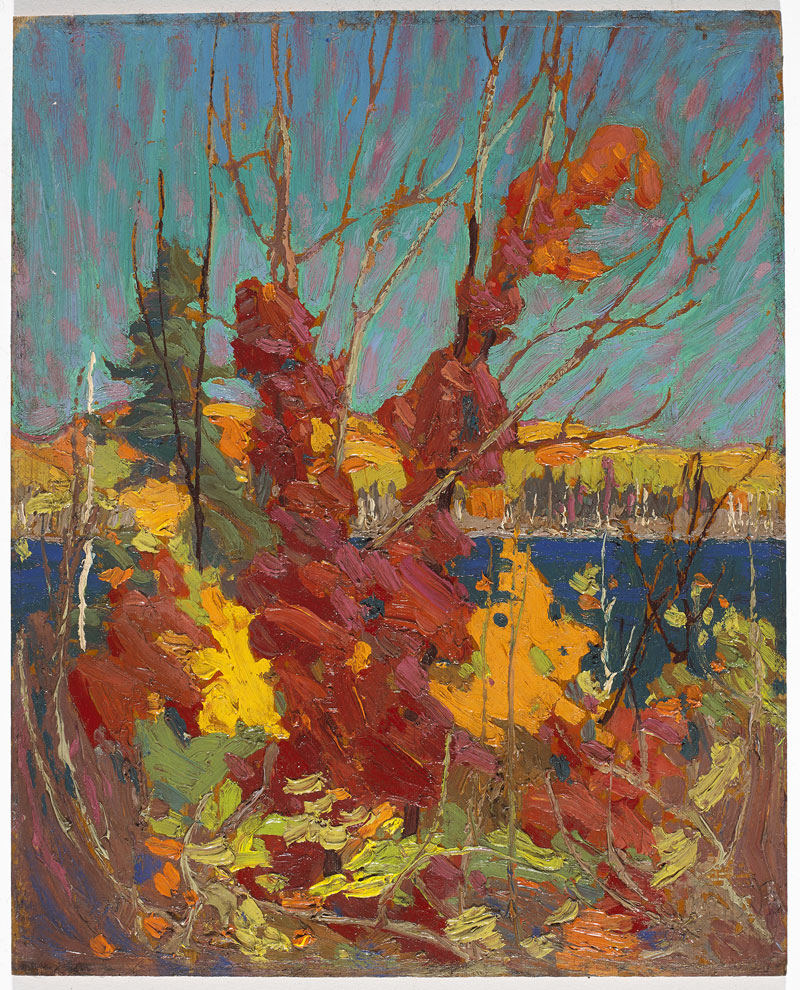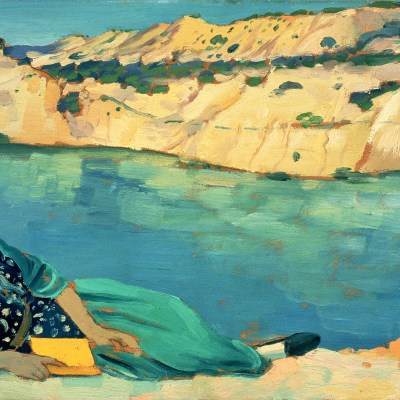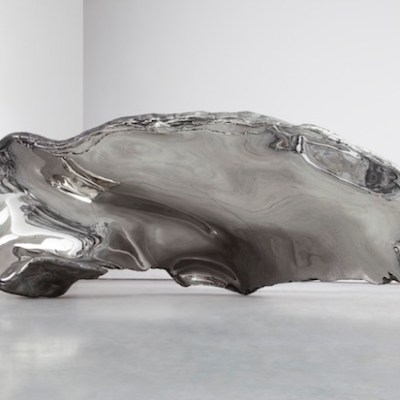I arrive at Algonquin Provincial Park by car, and reach the water’s edge at Canoe Lake just as a flotilla of schoolchildren runs noisily aground. To the left of their canoes, dozens of empty ones are lined up by the Portage Store ready for hire, and beyond that holidaymakers paddle in a disorderly fashion out into the wider lake, which spreads north for a couple of miles, strewn with small islands and lined with dense ranks of white pines. Served by the only highway to bisect the park, it’s a relatively busy spot – about as close to a tourist hub as you will get in this protected patch of Canadian wilderness – but you only need to get a short distance from the tarmac before the lakes open out around you or the woods close in.
Canoe Lake receives thousands of visitors each year, but is known for one in particular. I spot his name on a signpost near the picnic tables: Tom Thomson, 1877–1917. ‘Before his death on this lake’, explains the Historic Sites and Monuments Board of Canada, ‘he developed a bold new way of depicting our wilderness and [gave] Canadians a unique artistic heritage.’ The shop is stocked with Tom Thomson picture books and murder mysteries, while a map outside marks some key Tom Thomson sites: the old town of Mowat on the northwestern shore, where he spent his summer sojourns; the spots where his upturned canoe was found on 10 July 1917 and where his body was recovered six days later; the tiny plot where he was buried before being reinterred in his home town; the memorials to him at Hayhurst Point. Fittingly, the only way to get to any of them is by boat, or on foot.
Tom Thomson’s mysterious death (he was deemed to have drowned accidentally, but many people then and since have cried foul play) has become a modern legend in Canada, but the public’s fascination with the painter owes as much to the remarkable few years of artistic production that preceded it. His early career had been inauspicious: he worked as an illustrator and printmaker in Toronto from around 1909, and only focused seriously on painting in his 30s, at the encouragement of friends and patrons. In 1912, he made a brief visit to Algonquin, and from 1913 he returned regularly to the park for most of the spring, summer, and fall, exploring extensively and turning out a dazzling array of oil sketches on portable wood panels, before working up larger canvases in Toronto.
Autumn Foliage (1916), Tom Thomson. The National Gallery of Canada, Ottawa

The verve with which Thomson worked in Algonquin surprised everyone. In Autumn Foliage (1916) and countless other sketches, he threw down heavy clumps of impasto paint that would rival the most committed of expressionists, and simplified his subject to the point of abstraction in an effort to capture something of the landscape’s own clout – its textured ground, uneven light, wind, and choppy water. As Thomson’s biographer Harold Town (a painter himself) once put it, ‘they are as direct in attack as a punch in the nose.’ Several young artists in Thomson’s time were looking for a fresh, modern, and distinctively Canadian approach to painting (particularly in the light of the First World War, which threatened national identities – and landscapes – across the world), and those who worked alongside Thomson recognised that he was on to something. His death came as a profound shock. When some of his associates – A.Y. Jackson, Lawren Harris, J.E.H. MacDonald, Arthur Lismer, F.H. Varley, Franklin Carmichael and Frank Johnston – founded the Group of Seven three years later to promote Canadian painting, they felt his absence keenly. Thomson’s name has been connected with theirs ever since, even as they started to look outside of Algonquin for inspiration.
Shortly after Thomson died, his memory and his myth became entangled, with the epitaph at Hayhurst Point (penned by J.E.H. MacDonald) setting the tone. ‘He lived humbly but passionately with the wild. It made him brother to all untamed things of nature […] and [Nature] took him to itself at last.’ The memorial is a short trip north from the Canoe Lake entry point, and it is this Romantic vision of the artist and his paintings that I think draws many people to the lake. Never mind that he was a bit of a dandy in the city – Thomson is remembered as a woodsman and a wanderer, and his most iconic paintings, including his last one, The Jack Pine (1916–17), place him firmly in the wilderness among its pristine lakes and grand, beautiful trees.
Log Jam: Sketch for ‘The Drive’ (1916), Tom Thomson. The Thomson Collection © Art Gallery of Ontario

There’s another side to Algonquin, and therefore to Thomson, that I for one had overlooked. Canoe Lake was his gateway to the wild, but it was also already an outpost of industry and tourism. The lakeside town of Mowat boasted comfortable holiday retreats and a railway line, and had once been the largest mill town in the park. Thomson didn’t mind: in fact he was fascinated by the spectacle of the lumbermen working with and against nature to coax their felled cargo downstream. He painted the timber, dams and logjams frequently. His pioneer vision was Romantic, in its way, but he was certainly no environmentalist, nor was he an isolationist, despite his aversion to painting people.
The Logging Museum is the first thing you come to when you enter Algonquin from the east; this is the only one of Canada’s provincial parks that still allows controlled industrial logging within its borders. To ignore this part of the park’s character, to forget that the landscape has been shaped by the attention of man as much as it commands it, is to misunderstand something of it. Had Thomson lived, would he have supported and even painted the growing leisure industry here too? My guess is that it would have made him uncomfortable. What makes Thomson’s paintings so compelling is not their wildness, per se – though their subjects certainly are wild. It’s their familiarity. Thomson painted Algonquin to the exclusion of almost all else; his works are exercises in prolonged observation and interaction with a landscape. Nothing makes you more aware of that than having to leave via the highway as a tourist, after too short a stay.
From the September issue of Apollo: preview and subscribe here.


